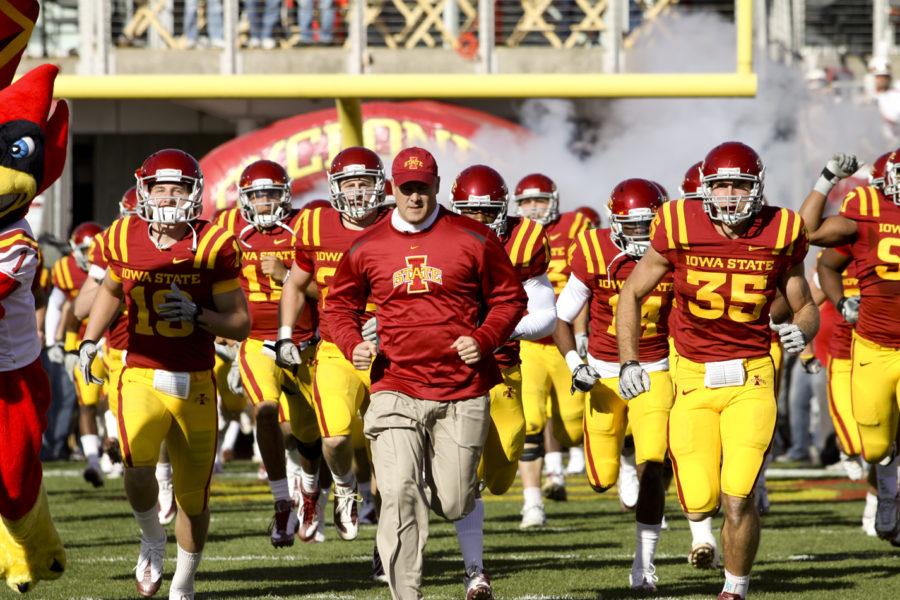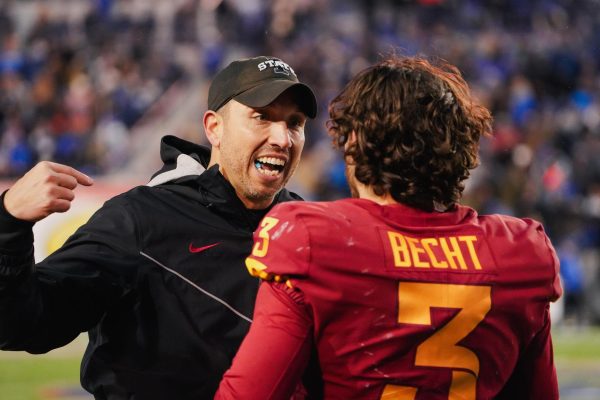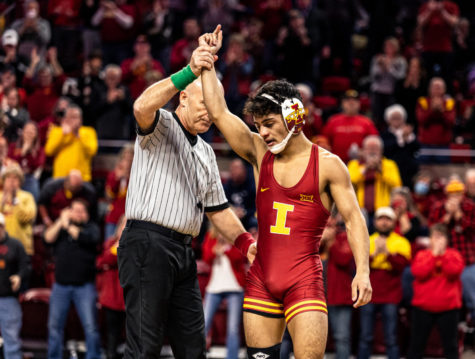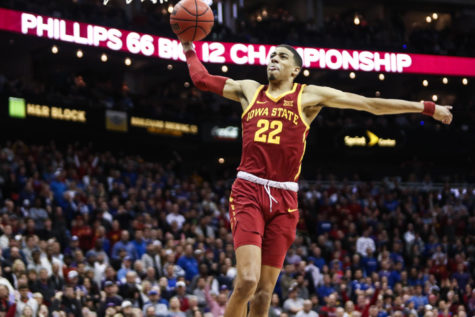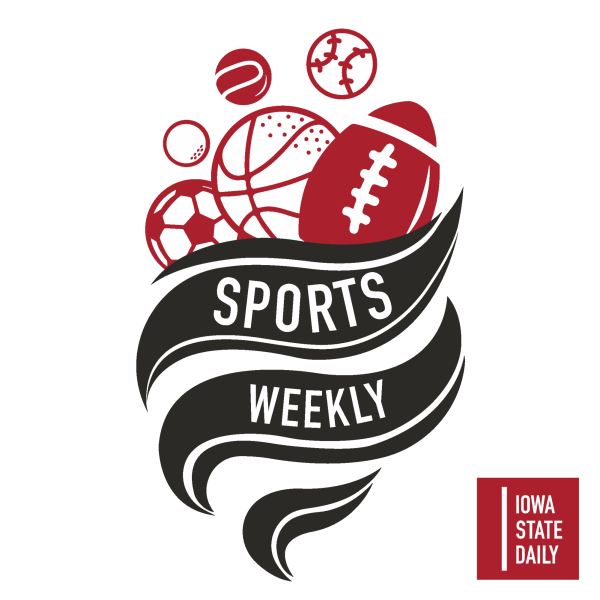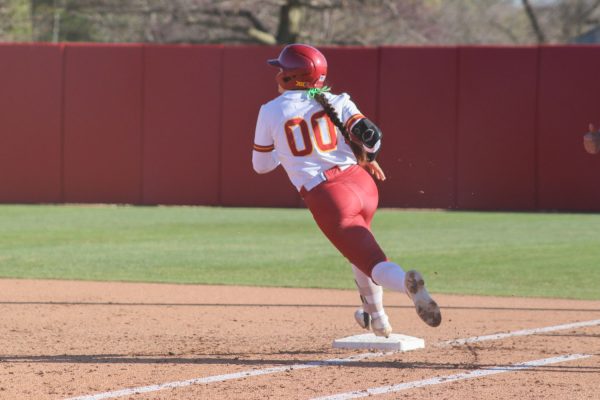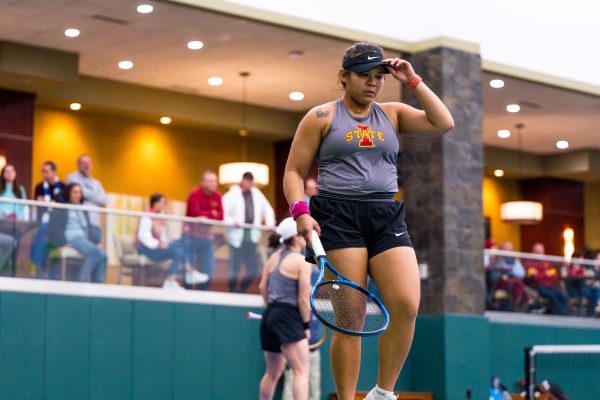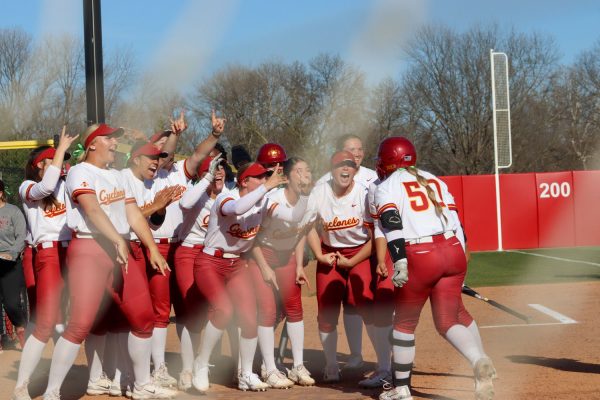A look back at the football season
Coach Paul Rhoads enters the field with the Iowa State football team on Saturday, Nov. 6. The Cyclones played the Cornhuskers and lost in overtime with a score of 31-30.
December 10, 2010
If before this season, you’d have told most Cyclone football fans that the team would have beaten Texas and come within one win of another bowl game, they would’ve stumbled all over themselves looking for a place to sign up.
The team I predicted in this space to go 6-6 finished the season 5-7, coming within the fingertips of a Nebraska defender from at least 6-6, and two of the biggest wins in program history.
At the beginning of the season, the schedule looked so formidable that many people, including myself, saw games that were almost impossible for the Cyclones to win. Of the 12 teams they played, half were ranked at the time the Cyclones played them, and four of those six were ranked in the top 10 in the nation when they took on the Cyclones.
There were some who were just hoping for four wins from this team. But even when things got tough — and it definitely got tough — it was able to keep its heads up and press forward.
I think the best way to describe the season for the Cyclones is as a roller coaster ride. Pardon the cliche, but there really isn’t a better description.
The season started with a good-looking win over a Northern Illinois team that finished the season 10-3. Then, after getting hopes around the program up, it got demolished in Iowa City at the hands of the Hawkeyes, who at the time had national championship aspirations.
After a close loss to Kansas State, the team built hopes back up after a shutout of Northern Iowa and a shootout with Texas Tech in which its offense hadn’t ever looked better.
Then came the worst two-week stretch in the Paul Rhoads era, when the defense gave up 120 points to then-No. 10 Utah and then-No. 6 Oklahoma. In the wake of those two losses, fans couldn’t find many games remaining on the schedule that the Cyclones seemed capable of winning.
But the roller coaster was just in a valley, and on its way back to a peak. The first-ever win against Texas restored confidence in both fans and players, getting the Cyclones to four wins and building back up the hope for a bowl game.
A homecoming win over Kansas later, the Cyclones then faced Nebraska for the final time as members of the Big 12. We all know what happened in that fateful game: overtime, the botched two-point conversion try. A Nebraska win, 31-30.
From there, even with three opportunities to do so, we watched the Cyclones’ roller coaster season come to a screeching halt with losses to the lowly Colorado Buffaloes in Boulder — and losing quarterback and leader Austen Arnaud in the process — and getting shut out by No. 15 Missouri on senior night.
The season took a toll on the emotions of everyone who followed the ISU football team this year. Expectations swayed with each week, and in the end, we were left feeling disappointed that the Cyclones didn’t get back to another bowl.
And maybe that’s a good thing. Fans weren’t simply happy that the team won more than three or four games and that the Texas win made everything OK. They — as well as the team, no doubt — were left wanting more.
Being disappointed with 5-7 means that fans, coaches and players expect more and believe that Rhoads and his staff are capable of leading those players to something more.
However, with the departure of Nebraska and Colorado, Iowa State now has to face Texas, Oklahoma, Oklahoma State and Texas A&M every year. The opportunity for a bowl game is going to be tough to come by for the foreseeable future. It’s going to take a supreme effort by everyone involved with the program for the Cyclones to be a perennial bowl game contender.
Let’s just hope Paul Rhoads doesn’t take the Pittsburgh bait and we get to find out if he can do it.

